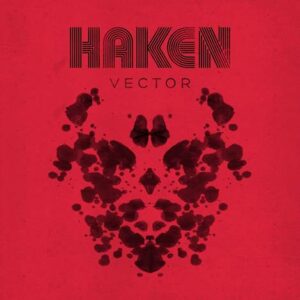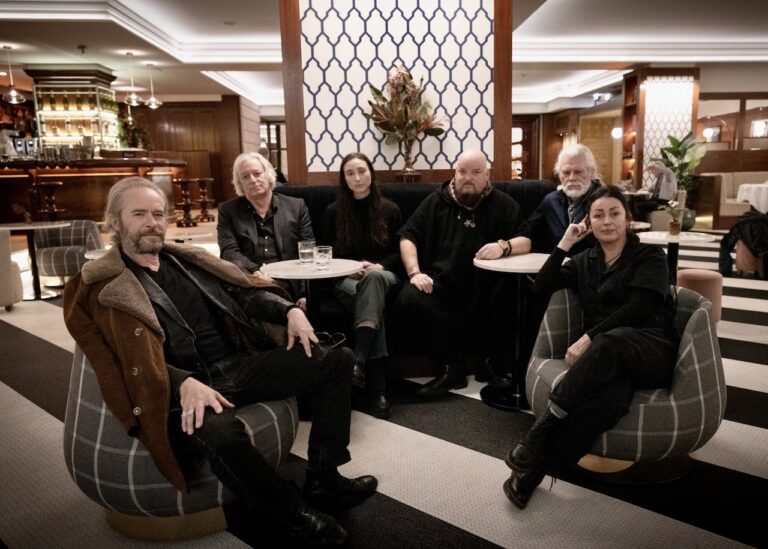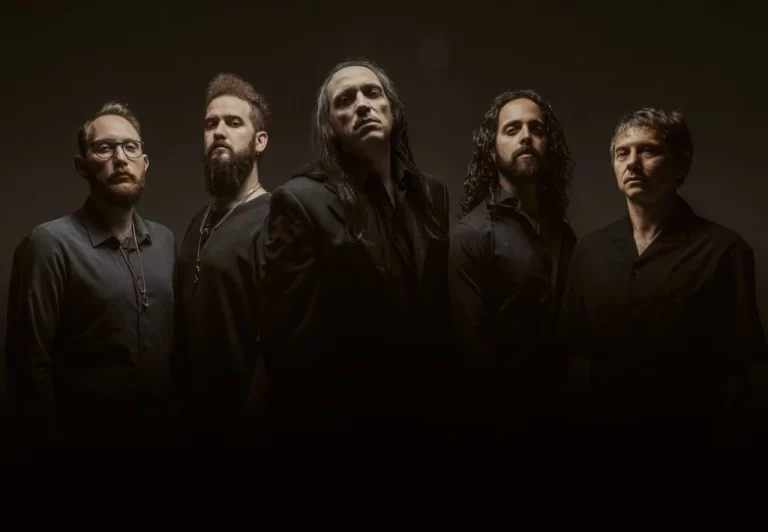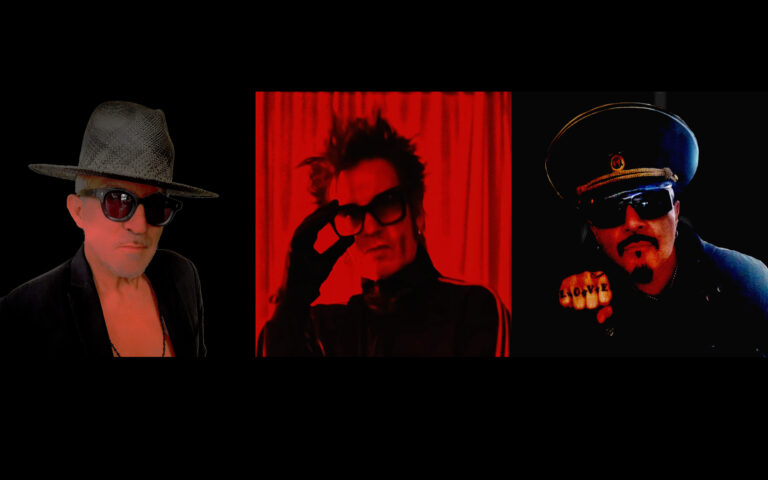Charlie Griffiths is the softly-spoken guitarist for UK-based progressive act Haken. Just prior to its release, I was lucky enough to secure some phone time with him in order to discuss Vector, the metallic follow up to 2016’s quite-brilliant affinity. With the album’s first broadside, the good doctor, showcasing a darker, tougher edge to the band, we discussed the influence of the band’s energetic live show on recording, Adam Getgood’s role in the development of the album and the enigmatic artwork that adorns the sleeve.
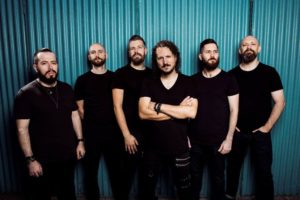
To start off with, obviously the big thing that you released earlier this year was the CD/DVD set of your tenth anniversary show and that was a great set, because it gave you a chance to revisit material that you either hadn’t played at all or at least not for a number of years, is that right?
Yeah, I think you’re probably right, I’m trying to think what we played now…
When you started working through some of the older material, was that, in anyway a catalyst for developing what seems to be a heavier record this time round?
I don’t know if that’s the case really. Most of the time there’s not much creativity involved – you’re just playing the songs as they are on the record – there’s not much room for changing them too much really. One thing we did was this Aquarius Medley, which was fun to put together because that allowed a bit of leeway for rewriting some of the sections. Gluing that together in a fun way that worked, that was a good little moment – to do a twenty minute version of an album. So, yeah, it was really just what we’d learned from touring over the years – the heavier moments go over a lot better live – they seem to create a much cooler atmosphere between the band and audience: there’s a lot more energy in the room.
So, in that sense, did it help to fire the song-writing on this record then?
Yeah, I guess so. Probably, yeah. I suppose we’re sort of thinking ahead a little bit in terms of how it’s going to work live. Not that we really think about people’s opinion of what we’re doing. While we’re writing, we try to ignore all that and please ourselves – the six of us in the band (all with a different opinion of how the song should be). So, already it’s difficult to please everyone and introducing a seventh imaginary person wouldn’t help! But, yeah, partly we were thinking ahead, as well, to the shows. How we would get that to work and if we were going to create that kind of cool energy in the room. So, yeah, I think the heavier stuff tends to do that a lot better.
You’ve got those heavier moments, but there’s also that really nice juxtaposition between those and the quieter passages… for example, on the new album you’ve got the super heavy nil-by-mouth going into the beautiful host and it always feels that when you have that ebb and flow, it makes everything sound bigger…
Cool – yeah. That’s part of what we’re trying to do, I suppose. We’re writing a song, but at the same time, we’re still one of those bands who are writing an album. We want it to be listened to from beginning to end, as a complete piece. So, yeah, it should have that sort of dramatic ebb and flow, as you say. If it was the same kind of thing throughout, I would get bored with that! We’re trying to make something entertaining and interesting and hopefully that works. I don’t know! We just get together and write music and put it out and that’s really all we think about.
But within that, there is a skill (and a challenge) to sequence an album and get that overall feel – so, when you were writing vector, did you write the songs and then think about sequencing or are you one of those rare bands who write in order…
No, definitely not the latter. It starts off as a very scattergun crafting, where we’ll just write a bunch of demoes for songs individually. So, it might be like Diego, he kind of created the host demo that you mentioned earlier. So, it might be one guy creates a demo or a couple of guys put it down, like Rich and Connor put together a few bits while we were on tour in Australia. So, they could be sketches and they go to the band and we work them a bit… sometimes, they get abandoned and something’s not inspiring and we’ll leave it and move on to another one. But the ones that are more successful, yeah, we’ll work them up to a more solid form and then, a couple of months into the process, we’ll start. It’s usually obvious what should be the first song and which should be the last song. Then we’ll put them in some kind of order from there and it’s kind of important to do because we need the lyrics to make sense, and with the album there’s always like a beginning, middle and an end even though it’s not like an obvious story, there’s definitely a kind of logical beginning and end. So, as soon as we can get it into an order, that makes lyric writing possible to organise. A lot of it’s just done by feel – you just kind of know what should go where.
And, of course, you also worked on the production for the record…
Well, we’ve done it the same way on every album. Every album we’ve produced ourselves and recorded ourselves. The only things that we go into a studio for are the drums and the vocals – those are the things that you need the right room to capture: those kinds of acoustic sounds. But everything else – all the other instruments (guitars, keyboards and bass) are just done on our home studios on our laptops. We use exactly the same method that we did for every album. But yeah, this time, having Adam there… It was different in that he was there. Previously, we worked with guys who were either in Germany or Sweden, so we would record everything ourselves and then send it to them. Then they’d mix it, send it back and then we’d communicate via email to make tweaks and whatnot. With Adam being in the UK as well, he was able to actually come to the drum sessions and mic up the kit how he’d do it and get his trademark sound. Also, the guitar sounds. Rich and I went up to his place and tried out all his amps that he’d got and settled on the Peavey 5150 – the Van Halen amp – so, all the while, we were there in the room with Adam and chatting about it and discussing it and, you know, drinking tea and all that good stuff. It’s a much nicer and more personal experience doing it like that and it’s easier when you’re in the room with someone than emailing them. So, it was just like a nicer, more real-life experience than it has been before.
I guess, as well, it provides an additional ear for some of the little bits – you can get very tightly knit when recording yourselves. Did he help in that way, or did he not have that kind of role?
Um, no, not really. He wasn’t really there while we were recording. He would only be there for the setting up of the drums. So, for the guitar stuff, it was a case of re-amping with him what we recorded at home. So, we record a DI guitar signal and then we take it to the studio and play what we recorded through an amp, so by the time we get to Adam, everything is kind of finalised and recorded, so he doesn’t really have a… although he’d probably like to simplify a couple of moments, he didn’t get the opportunity to do that. So, a few parts were challenging to give everything its space because, when you have a band like ours where there’s a lot going on in all the departments – guitars / drums / keyboards – we imagine everything kind of locked together into a like a jigsaw, but that’s not always that easy to bring out in the mix, to make everything audible and still keep it powerful. So, yeah, there were a couple of challenging moments for Adam for sure, but he’s a trooper and he’s done an amazing job – I love how it sounds.
Did you leave him to it when it came to the mix itself?
Well, we kind of went to his place on day 1 and we kind of spent all day doing a mix of Nil By Mouth with him – myself, Adam and Rich together – and, yeah, so we kind of went up for the day to do that and then, once, he had a kind of sense of what we were looking for, we left him to it for a couple of weeks and he kind of used that Nil By Mouth mix as a template to apply to the other songs. Even though every song requires its own kind of way of mixing; he knows what he’s doing, so we left him to it and he kept us updated over the next few weeks, mixed things and then a couple of weeks later we went back and finalised everything. So, we listened through to the whole album and made tweaks here and there – what things we wanted to bring out more or turn down a little bit or whatever, so yeah, we were there at the beginning and the end and we left him to it in the middle.
Once you had the finished album, you put together some very different artwork – the Rorschach test which reflects a number of themes within the album. Are you guys very hands-on when it comes to creating that side of things?
Oh definitely. Yeah. The whole… I don’t know if you’ve had the opportunity to see the artwork fully yet?
No, not yet…
I don’t know if it’s even physically been produced, but anyway, we worked very closely with this company – Black Lake – and they’ve done all our stuff since The Mountain and so, yeah, we had this idea of… the theme and story of the album is based on a sort of 1950s psychology and it’s almost like an institution. You can imagine it like One Flew over the Cuckoo’s Nest with Jack Nicholson. So, in that time, the treatment of patients wasn’t as humane as it is today and we were interested in a lot of the experiments that were carried out and we looked at the work of Stanley Milgram who made the famous electrocution test where everything was faked, but the idea was “would someone electrocute someone else because they’re told to by someone in authority” so, yeah, it was stuff like that and some other guys who came to mind. Obviously Rorschach predates all that and was still used at the time, so yeah, we went to Black Lake and the guy there, Mark, who created all our artwork… it turns out he did his degree in psychology, so a lot of it was him making sure everything was historically accurate. So, he got out all his old text books and made sure it was correct. You’ll see, hopefully one day, in the booklet – it’s full of cool stuff like prescriptions and psychological reports and various little Easter Eggs that we put in there to give further clues to the meaning behind the album and how it links in to other stuff we’ve done. It’s very much like a visual story as well something you can hear.
That’s really cool – I’m a huge physical music fan and I like the idea of the open-to-interpretation cover and the fact that you’ve taken that trouble to leave ideas and clues for the fans and it makes it into an artistic package that people can enjoy over a long period of time.
Yeah – we’ve got this medium at our disposal. We’re able to present our ideas in an audio and visual manner so yeah; we might as well use it to its full potential as we can. You have to do everything you can to make it a fun experience. We just enjoy making it; it’s fun to create all this kind of stuff – this little world. Each album is like its own world that we want to represent somehow. And talking about the cover, by the way, that’s probably the quickest album cover ever because it was created completely randomly, as you’d expect… He did it using ink on paper. I think I emailed him in the morning asking if he could make us a Rorschach and by the afternoon he’d made us many of them! Yeah, he sent them over and we picked that one. That was it! Yeah, so the cool thing is that it was created randomly, so whatever it is you think you see in that cover – it’s you! You’re making it up, so that’s exactly what a Rorschach should do.
Which is cool because how people perceive music is equally open to interpretation…
Yeah, exactly – the difference of each guy in the band as well, because we all have our own ideas as to what it means and what the songs mean. Everyone is different and just because I wrote the lyrics to a certain song doesn’t mean I know what it’s about any more than anyone else – everyone’s correct in a way. And definitely that cover represents that kind of… way of how we want to present it – yeah – you should make up your own mind and take from it whatever you want.
